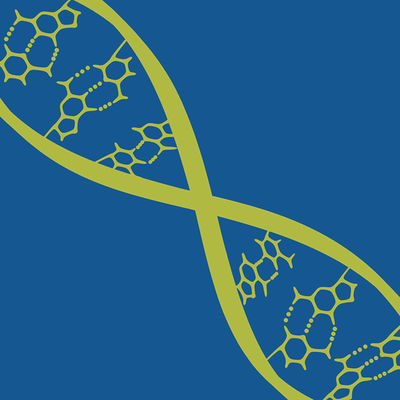Request Demo
Last update 08 May 2025
IL-31RB
Last update 08 May 2025
Basic Info
Synonyms IL-31 receptor subunit beta, IL-31R subunit beta, IL-31R-beta + [7] |
Introduction Associates with IL31RA to form the IL31 receptor. Binds IL31 to activate STAT3 and possibly STAT1 and STAT5. Capable of transducing OSM-specific signaling events. |
Related
2
Drugs associated with IL-31RBTarget |
Mechanism OSMRβ inhibitors |
Active Org. |
Originator Org. |
Active Indication |
Inactive Indication |
Drug Highest PhasePhase 2 |
First Approval Ctry. / Loc.- |
First Approval Date20 Jan 1800 |
Target |
Mechanism OSMRβ inhibitors |
Active Org. |
Originator Org. |
Active Indication |
Inactive Indication- |
Drug Highest PhasePreclinical |
First Approval Ctry. / Loc.- |
First Approval Date20 Jan 1800 |
7
Clinical Trials associated with IL-31RBNCT06693908
A Phase Ic Open-label Study to Evaluate the Pharmacodynamic Effects, Pharmacokinetics, and Safety of Vixarelimab in Patients With Moderate to Severe Active Ulcerative Colitis
This study aims to evaluate the pharmacodynamic (PD) effects of vixarelimab in the gut of participants with active moderate to severe ulcerative colitis (UC).
Start Date31 Mar 2025 |
Sponsor / Collaborator |
CTIS2024-516287-29-00
- GA45735
Start Date11 Mar 2025 |
Sponsor / Collaborator |
NCT06137183
A Phase II, Multicenter Induction Study With an Active Treatment Extension to Evaluate the Efficacy, Safety, and Pharmacokinetics of Vixarelimab in Patients With Moderate to Severe Ulcerative Colitis
The purpose of this study is to evaluate the efficacy, safety, and pharmacokinetics (PK) of vixarelimab compared with placebo in participants with moderate to severe UC who have demonstrated inadequate response to, loss of response to, or intolerance to prior conventional or advanced therapy.
Start Date01 May 2024 |
Sponsor / Collaborator |
100 Clinical Results associated with IL-31RB
Login to view more data
100 Translational Medicine associated with IL-31RB
Login to view more data
0 Patents (Medical) associated with IL-31RB
Login to view more data
398
Literatures (Medical) associated with IL-31RB01 Apr 2025·Journal of Allergy and Clinical Immunology
Nasal transcriptome differences preceding recurrent wheezing in infancy
Article
Author: Dhar, Poshmaal ; Morgan, Rachel ; Ashley, Sarah ; Vuillermin, Peter ; Saffery, Richard ; Ponsonby, Anne-Louise ; Collier, Fiona ; O'Hely, Martin ; Mansell, Toby ; Sly, Peter D ; Ranganathan, Sarath C ; Burgner, David ; Tang, Mimi Lk ; Sominsky, Luba
17 Mar 2025·Journal of Clinical Investigation
Human oncostatin M deficiency underlies an inherited severe bone marrow failure syndrome
Article
Author: Mahony, Christopher B ; Willems, Marjolaine ; Cavazzana, Marina ; Anginot, Adrienne ; Susini, Sandrine ; Garrigue, Alexandrine ; Callebaut, Isabelle ; Cormier-Daire, Valérie ; Kermasson, Laëtitia ; Luce, Sonia ; Fert, Ingrid ; Le Bousse-Kerdilès, Marie-Caroline ; Bertrand, Julien Y ; Six, Emmanuelle ; Chouteau, Myriam ; André, Isabelle ; Sirvent, Anne ; Lagresle-Peyrou, Chantal ; Sadek, Hanem ; Souraud, Jean-Baptiste ; Revy, Patrick ; Russello, Jennifer
01 Jan 2025·CNS Neuroscience & Therapeutics
A Risk Model Based on Ferroptosis‐Related Genes OSMR, G0S2, IGFBP6, IGHG2, and FMOD Predicts Prognosis in Glioblastoma Multiforme
Article
Author: Wu, Yaqiu ; Li, Zhili ; Liu, Ling ; Wang, Qi ; Cheng, Meixiong ; Zhang, Tian
Analysis
Perform a panoramic analysis of this field.
login
or

AI Agents Built for Biopharma Breakthroughs
Accelerate discovery. Empower decisions. Transform outcomes.
Get started for free today!
Accelerate Strategic R&D decision making with Synapse, PatSnap’s AI-powered Connected Innovation Intelligence Platform Built for Life Sciences Professionals.
Start your data trial now!
Synapse data is also accessible to external entities via APIs or data packages. Empower better decisions with the latest in pharmaceutical intelligence.
Bio
Bio Sequences Search & Analysis
Sign up for free
Chemical
Chemical Structures Search & Analysis
Sign up for free


